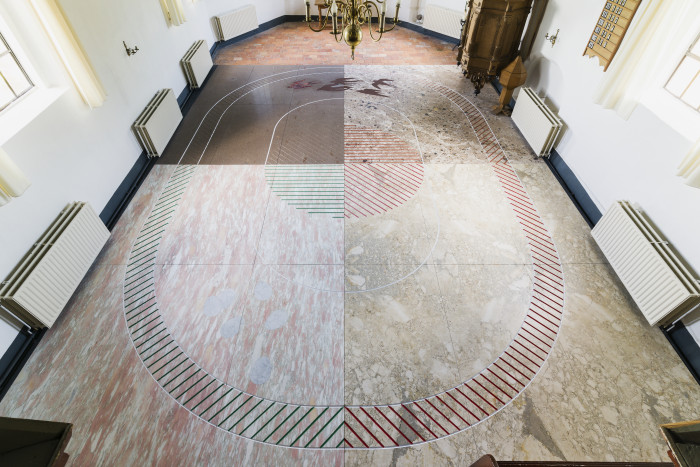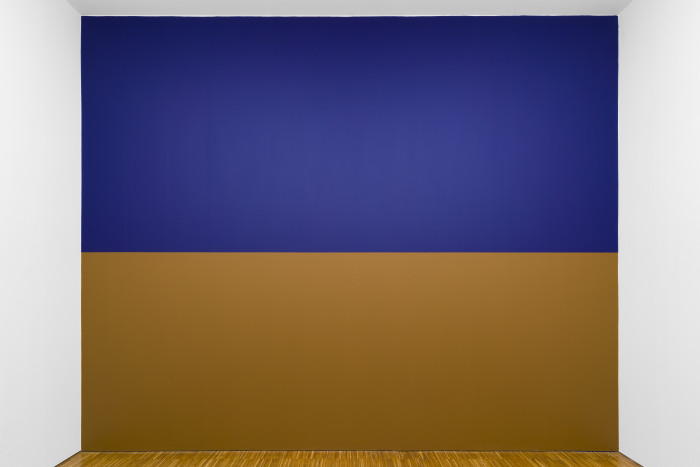Legend: Eating Colors and a Beautiful Insular Behind
Eating Colors and a Beautiful Insular Behind is a triptych and part of Legend Paintings, a series of fixed-format paintings on wood, started in 2014. The titles refer to historical references and are accompanied by a short explanatory text with a contemporary socio-political resonance.
These captions are not unambiguous. On the contrary, they are open to subjective interpretations. "When creating a painting [...], I create small paintings instead of texts. These are called "legend paintings" – a 'legend' as those included in a map: mapping something, putting all the information together - to facilitate interpretation of everything on the painting in the right way." [Bosmans, 2022] In his Legend Paintings, historical references from all periods converge with current socio-political issues, in this case the place reserved to marginality in the dominant culture.
The three paintings Eating Colors and a Beautiful Insular Behind, dated 2022, have been executed in gouache using a silver marker. In the same year, they were first shown at the Husbandry exhibition at WIELS in Brussels. They were appended to a mural by Bosmans, with the complete series of five triptychs.
The first panel, on a black background, shows two recessed circles painted in red and violet, as if looking through binoculars. Inside, a motif of turtle shells is shown on the left and a bare man’s back, at the level of the buttocks, covered by two green ovals on the right. "Kallokibotion Bajazidi" is the name of a small, prehistoric turtle discovered by Franz Nopcsa, a Hungarian palaeontologist. This discovery allowed Nopsca to prove the existence of insular species in Europe. He named the turtle after his lover, Bajazid Doda, because its shape reminded him of Doda's beautiful hindquarters." [Mullié, 2022].
As in each of the central panels of the five triptychs, the central panel features the same legend, with flowers framed on either side by a fence of stakes. On the central panel of the first triptych, however, an element is shown conveying meaning to the series: a donkey. "The Golden Donkey," a novel by Lucius Apuleius Madaurensis, tells the story of a Greek student who accidentally turns into a donkey. The only antidote that can turn him back into a human would be to eat roses. While searching for roses, the main character repeatedly experiences miraculous transformations and metamorphoses. The colourful fence refers to the stripes of the "colourful whistler" [pied piper, i.e. "the Pied Piper of Hamelin"], who is dressed in this jester pattern, in the Middle Ages the icon of folly, partly dangerous, partly intuitive". [Mullié, 2022].
The third panel shows an abundance of snail shells. "The Polymita picta, a snail found on and near Cuba, is a good example of the power relations between animals and humans. Each specimen, each personality, has a unique shell colour. This is a self-protection mechanism: certain animals do not want to eat the Polymita picta because it looks poisonous. Standing out as self-protection is a surprising mechanism, as this is the last thing a human would do. The snails are collected as souvenirs because of their extraordinary appearance.; they are now protected by the Cuban government as an endangered species. Once again, an animal has fallen victim to human eyes and appropriation." [Mullié, 2022].


